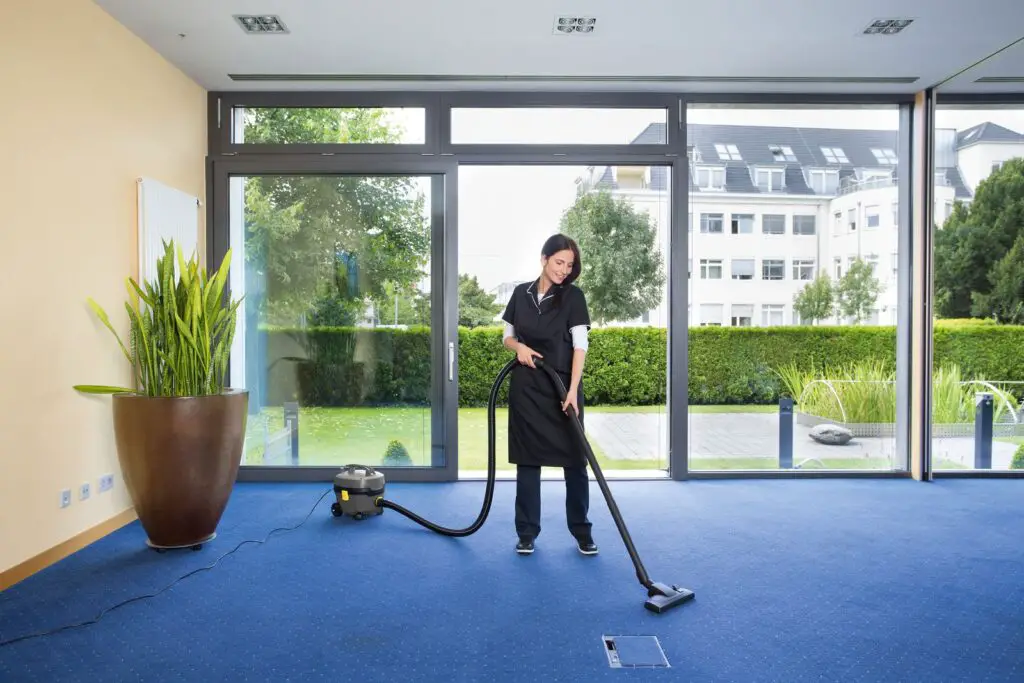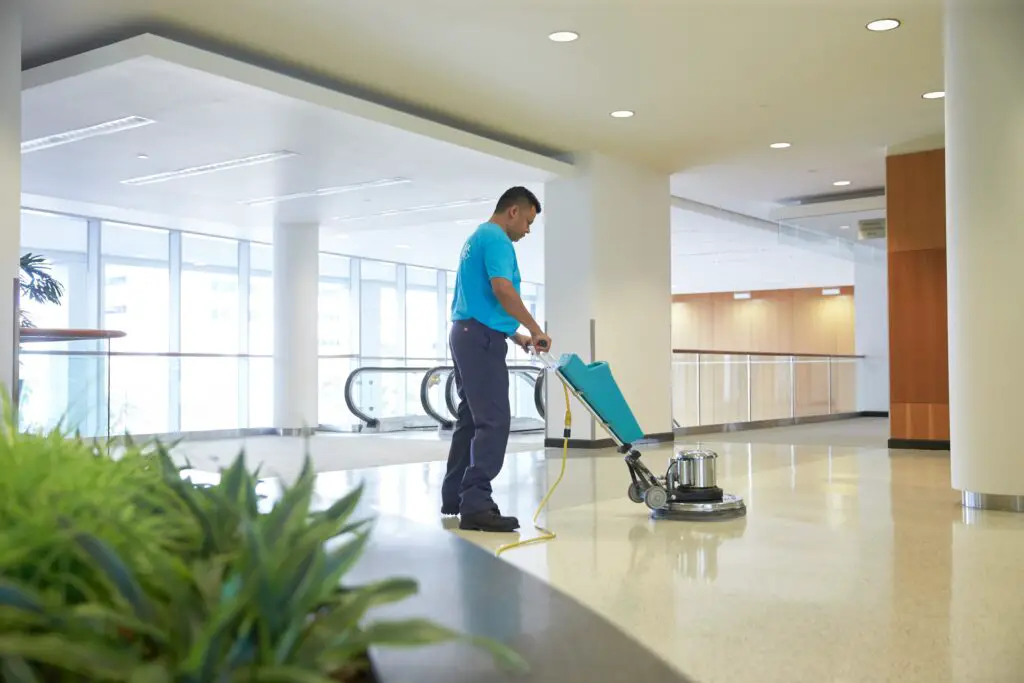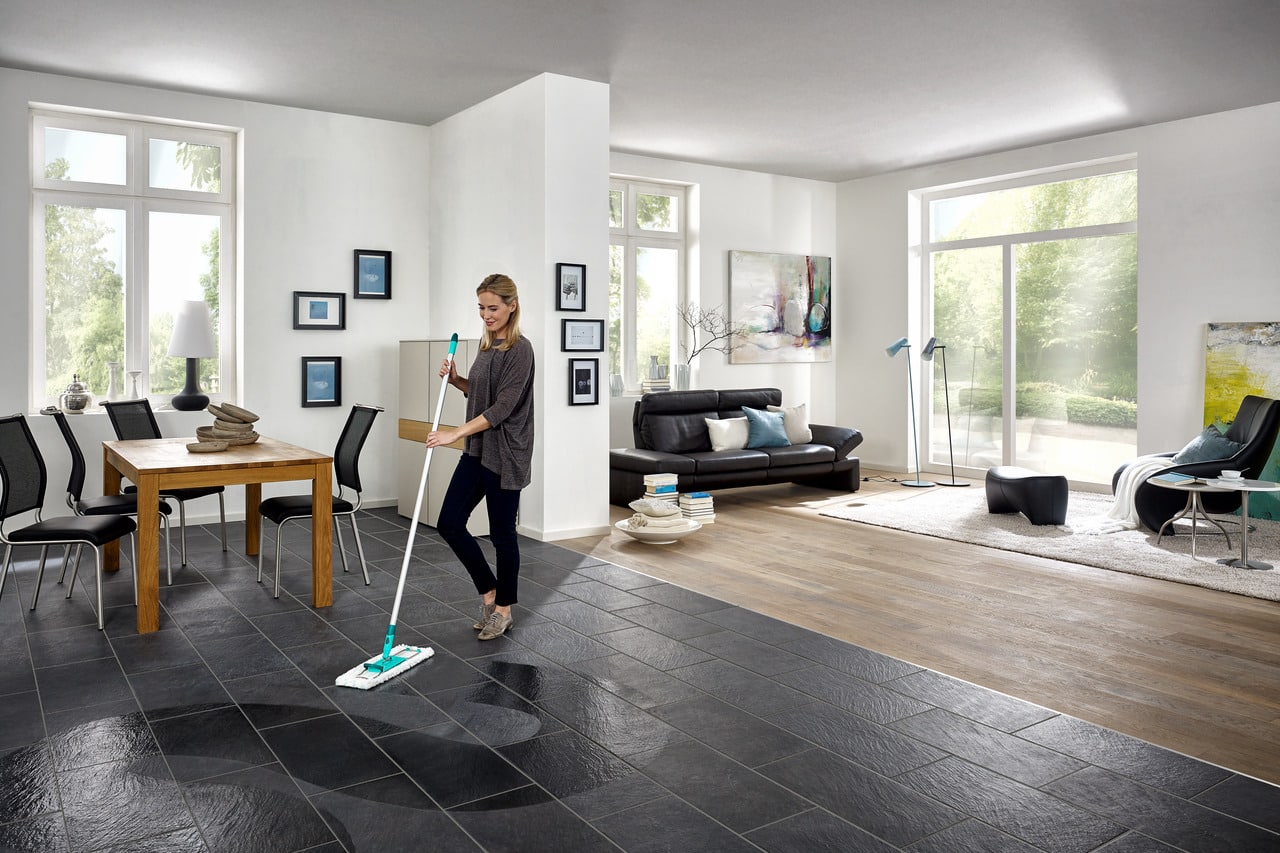How To Clean Interior Concrete Floors
Introduction
How To Clean Interior Concrete Floors: Interior concrete floors are a popular choice for many homeowners due to their durability and low maintenance. However, over time, these floors can accumulate dirt, stains, and grime, making them look dull and unappealing. Cleaning interior concrete floors is essential to maintain their appearance and prolong their lifespan. In this article, we will discuss effective methods and tips on how to clean interior concrete floors.
Interior concrete floors are subjected to daily wear and tear, foot traffic, spills, and other forms of dirt and debris. If not cleaned regularly, these floors can become unsightly and may even develop permanent stains. Additionally, dirt and grime can act as abrasives, causing the concrete to wear down faster. By regularly cleaning interior concrete floors, you can prevent the buildup of dirt and stains, keeping them looking fresh and new for years to come.
Methods for cleaning interior concrete floors: There are several methods you can use to clean interior concrete floors, depending on the level of dirt and stains. One common method is to sweep or vacuum the floor to remove loose dirt and debris. Next, you can use a mop or scrub brush with a mild detergent or concrete cleaner to scrub the surface. For stubborn stains, you may need to use a stronger cleaner or a specialized stain remover. It is important to follow the manufacturer’s instructions when using any cleaning products on your interior concrete floors.

What is the cheapest way to stain concrete?
Acid stain can be one of the cheapest things you can do and it provides a great bang for your buck. This look is achieved by creating a chemical reaction that alters the color of concrete. Concrete acid stain contains a mixture of water, mineral salts, and muriatic acid.
Staining concrete is a popular way to enhance the appearance of a concrete surface. It can add color, depth, and texture to an otherwise plain and dull surface. However, the cost of staining concrete can vary greatly depending on the method and materials used. If you’re looking for the cheapest way to stain concrete, there are a few options to consider.
One of the most affordable ways to stain concrete is by using acid-based stains.
Acid stains penetrate the concrete surface and react with the minerals in the concrete to create a permanent color. These stains come in a variety of colors and can create a mottled, variegated look that resembles natural stone. Acid stains are typically applied with a sprayer or brush and require multiple coats for optimal results. While acid stains are relatively inexpensive, they do require some skill and experience to apply correctly.
If you’re looking for an even more budget-friendly option, consider using water-based stains. Water-based stains are typically less expensive than acid stains and are easier to apply. They come in a wide range of colors and can be applied with a brush or roller. Water-based stains are also more environmentally friendly than acid stains, as they don’t contain harsh chemicals. However, they may not penetrate the concrete surface as deeply as acid stains, resulting in a less durable finish.
Another cost-effective option for staining concrete is using concrete dyes. Concrete dyes are available in both water-based and solvent-based formulas and offer a wide range of colors. They can be applied with a brush, roller, or sprayer and are typically more affordable than acid stains. Concrete dyes provide a more consistent color than acid stains and can be used to create vibrant, bold hues. However, they may not offer the same depth and variegation as acid stains.
Can I stain my concrete floor myself?
Apply the Stain and Remove Residue
Use an acid-resistant airless paint sprayer to neatly and evenly apply the stain on the concrete slab. You may also use a paint roller or handheld brush for stain application in smaller areas and tight corners on the slab. Work in sections as needed.
Yes, you can stain your concrete floor yourself. Staining concrete floors has become a popular DIY project for homeowners looking to add a unique and stylish touch to their homes. With the right tools and materials, staining your concrete floor can be a relatively simple and cost-effective way to transform the look of your space.
Before you begin staining your concrete floor
It’s important to properly prepare the surface. This includes cleaning the floor thoroughly to remove any dirt, dust, or debris. You may also need to repair any cracks or imperfections in the concrete before applying the stain. Once the surface is clean and smooth, you can begin the staining process.
There are two main types of concrete stains: acid-based stains and water-based stains. Acid-based stains penetrate the concrete and react chemically to create a unique, mottled appearance. Water-based stains, on the other hand, are more user-friendly and easier to work with. They come in a variety of colors and can be applied using a brush, roller, or sprayer.
When applying the stain, it’s important to follow the manufacturer’s instructions carefully. This may include diluting the stain with water, applying multiple coats, or using specific tools or techniques. It’s also important to wear protective clothing, gloves, and eyewear to avoid any contact with the stain.
Once the stain has been applied, you will need to allow it to dry and cure. This can take anywhere from a few hours to a few days, depending on the type of stain and the conditions in your space. Once the stain is fully dry, you can apply a sealer to protect the surface and enhance the color and shine of the stain.
Is it better to stain or paint concrete?
To sum it up, most interior projects and all exterior projects choosing between concrete stain or paint are likely better served by a stain solution. Furthermore, horizontal surfaces are best benefited from an acid stain, while vertical surfaces require a professional mineral stain solution.
When it comes to enhancing the appearance of concrete surfaces, homeowners often face the dilemma of whether to stain or paint their concrete. Both staining and painting offer unique benefits and can transform the look of concrete, but the choice ultimately depends on the desired outcome and the specific characteristics of the concrete surface.
Staining concrete involves applying a translucent color to the surface
Allowing the natural texture and variations of the concrete to show through. This creates a more organic and rustic look, as the stain penetrates the pores of the concrete and becomes a permanent part of the surface. Staining is a popular choice for those who want to enhance the natural beauty of their concrete, as it can mimic the appearance of natural stone or marble. Additionally, stains are available in a wide range of colors, allowing homeowners to achieve the desired look for their space.
Painting concrete, on the other hand, involves applying a solid color to the surface, completely covering the natural texture and variations of the concrete. This creates a more uniform and polished look, as the paint forms a protective layer on top of the concrete. Painting is a popular choice for those who want to completely change the color or appearance of their concrete, as it offers a wide range of color options and can be easily customized to match the existing decor. Additionally, paint provides a durable and long-lasting finish that can withstand heavy foot traffic and exposure to the elements.
Ultimately, the decision between staining and painting concrete depends on personal preference and the specific requirements of the project.
Which is better epoxy or stain concrete?
Epoxy covering is an excellent choice if you need to cover up damage; thus, many commercial work environments opt for epoxy. If you want to improve the look and texture of a concrete surface, stain it to look like natural stone, and achieve a solid, long-lasting color.
Epoxy and stained concrete are both popular options for enhancing the appearance of concrete surfaces. However, determining which is better depends on various factors such as the desired look, durability, and maintenance requirements.
Epoxy is a type of resin that is applied to the concrete surface to create a smooth
Glossy finish. It is available in a wide range of colors and can be customized to create unique designs and patterns. Epoxy is highly durable and resistant to stains, chemicals, and abrasion, making it an excellent choice for high-traffic areas such as garages and commercial spaces. Additionally, epoxy is easy to clean and maintain, requiring only regular sweeping and occasional mopping.
Stained concrete, on the other hand, involves applying a chemical stain to the concrete surface to create a translucent, variegated appearance. Stained concrete provides a more natural and organic look, making it suitable for outdoor spaces such as patios and pool decks. However, it is important to note that stained concrete is not as durable as epoxy and may require periodic resealing to maintain its appearance and protect against stains.
When deciding between epoxy and stained concrete, it is essential to consider the specific requirements of the project. If durability and low maintenance are top priorities, epoxy may be the better option. On the other hand, if a more natural and textured look is desired, stained concrete may be the preferred choice. Ultimately, both epoxy and stained concrete can enhance the appearance of concrete surfaces and provide long-lasting results when properly installed and maintained.
What color stained concrete is best?
MOST POPULAR CONCRETE STAIN COLORS
- Grey concrete stain.
- Black concrete stain.
- White concrete stain.
- Blue concrete stain.
- Brown concrete stain.
- Red concrete stain.
- Terracotta concrete stain.
- Charcoal concrete stain.
When it comes to choosing the best color for stained concrete, there are several factors to consider.
One popular option for stained concrete is earth tones. These colors, such as browns, tans, and grays, are versatile and can work well in a variety of settings. Earth tones can create a warm and inviting atmosphere, making them a popular choice for residential spaces. They can also be used to create a natural and organic look, which is often desired in outdoor spaces.
If you’re looking for a more vibrant and eye-catching option, consider using jewel tones. These colors, such as deep blues, rich greens, and bold purples, can add a pop of color and create a dramatic effect. Jewel tones are often used in commercial spaces or areas where you want to make a statement. They can also be used to create a sense of luxury and elegance.
Another option to consider is using neutral colors. Neutral colors, such as whites, beiges, and grays, can create a clean and modern look. Neutral colors can also be a good choice if you want to create a blank canvas and allow other elements in the space to stand out.
Ultimately, the best color for stained concrete will depend on your personal preferences and the specific design goals of your project. It’s important to consider factors such as the surrounding environment, the desired atmosphere, and the overall style of the space. Additionally, it can be helpful to consult with a professional who can provide guidance and expertise in choosing the best color for your stained concrete.
When it comes to cleaning interior concrete floors, it is important to use the right products to ensure effective and safe cleaning.
The recommended cleaning products for interior concrete floors include:
1. pH-neutral cleaners: These cleaners are gentle on the concrete surface and do not cause any damage or discoloration. They are effective in removing dirt, grime, and stains without leaving any residue behind.
2. Concrete degreasers: If your concrete floor has grease or oil stains, using a concrete degreaser is essential.
3. Concrete sealers: After cleaning the concrete floor, applying a concrete sealer can help protect the surface from future stains and damage. Sealers create a protective barrier that prevents liquids and stains from penetrating the concrete.
Are there any specific techniques or tools that should be used to clean interior concrete floors?
When it comes to cleaning interior concrete floors, there are specific techniques and tools that can help you achieve the best results. Firstly, it is important to sweep or vacuum the floor to remove any loose dirt or debris. This will prevent scratching the surface during the cleaning process.
Next, you can use a mop or a scrub brush along with a cleaning solution specifically designed for concrete floors. Additionally, you can also use a pressure washer for a more thorough cleaning, especially for heavily soiled areas.
For stubborn stains or grease spots, you may need to use a degreaser or a specialized concrete cleaner. It is important to follow the manufacturer’s instructions and test the cleaner on a small, inconspicuous area before applying it to the entire floor. Finally, make sure to rinse the floor thoroughly with clean water to remove any residue from the cleaning products.
How often should interior concrete floors be cleaned?
However, in high-traffic areas or spaces that are prone to spills and stains, more frequent cleaning may be necessary. For example, in commercial settings such as restaurants or retail stores, it may be necessary to clean the floors on a daily basis to ensure a clean and safe environment for customers and employees.
When determining the frequency of cleaning, it is important to consider the specific needs of the concrete floors and the level of maintenance required to keep them in optimal condition. Regular cleaning not only helps to maintain the appearance of the floors but also extends their lifespan by preventing the buildup of dirt and grime that can cause damage over time. Additionally, regular cleaning can help to prevent the growth of mold or mildew, which can be a health hazard.
Are there any precautions or safety measures to consider when cleaning interior concrete floors?
When cleaning interior concrete floors, it is important to take certain precautions and safety measures to ensure a safe and effective cleaning process. Firstly, it is essential to wear protective gear such as gloves, goggles, and a mask to protect yourself from any potential hazards. Concrete cleaning products can be harsh and may cause skin irritation or respiratory issues if not handled properly.
Additionally, it is crucial to ensure proper ventilation in the area where you are cleaning the concrete floors. This will help to minimize the inhalation of any fumes or chemicals that may be present in the cleaning products. Open windows or use fans to circulate fresh air throughout the space.
Can you provide step-by-step instructions for effectively cleaning interior concrete floors?
When it comes to effectively cleaning interior concrete floors, following a step-by-step process can ensure the best results. Here is a guide to help you get started:
Step 1: Start by removing any loose debris or dirt from the floor. Use a broom or a vacuum cleaner with a brush attachment to sweep or vacuum the entire surface. This will help prevent scratching or damaging the concrete during the cleaning process.
Step 2: Mix a mild detergent or a pH-neutral cleaner with warm water in a bucket. Avoid using harsh chemicals or acidic cleaners as they can damage the concrete.
Step 3: Dip a mop or a soft-bristle brush into the cleaning solution and wring out any excess liquid. Start mopping or scrubbing the floor, working in small sections at a time. Pay extra attention to any stains or heavily soiled areas.
Step 4: After scrubbing, let the cleaning solution sit on the floor for a few minutes to allow it to penetrate and loosen any stubborn dirt or grime. This will make it easier to remove during the rinsing process.
Step 5: Rinse the floor thoroughly with clean water. You can use a mop or a wet vacuum to remove the dirty water. Make sure to remove all traces of the cleaning solution to prevent any residue from building up on the surface.
Step 6: Once the floor is rinsed, use a clean mop or towel to dry the surface. This will help prevent any water spots or streaks from forming.
By following these step-by-step instructions, you can effectively clean your interior concrete floors and maintain their appearance and durability for years to come.

Conclusion
Regular maintenance is key to keeping interior concrete floors looking their best. Sweeping or vacuuming the floor on a regular basis will help prevent dirt and debris from accumulating and causing damage. Additionally, promptly cleaning up any spills or stains will help prevent them from becoming permanent.
It is worth noting that different types of concrete floors may require slightly different cleaning methods. For example, polished concrete floors may require specific cleaning products and techniques to maintain their shine. It is important to consult the manufacturer’s instructions or seek professional advice if unsure about the appropriate cleaning methods for a specific type of concrete floor.
Cleaning interior concrete floors is a straightforward process that can greatly enhance the overall look and durability of the flooring. By following the steps outlined in this guide and implementing regular maintenance practices, individuals can ensure that their concrete floors remain clean and in good condition for years to come. Whether it is a residential or commercial space, clean concrete floors can create a welcoming and professional environment. So, take the time to clean and maintain your interior concrete floors, and enjoy the benefits of a clean and attractive space.








